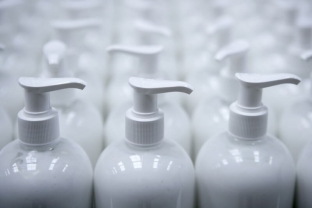The human body is inhabited by a huge number of different microorganisms, most of all they live in the intestines and on the skin, and therefore the researchers suggested that such a phenomenon as dysbiosis can relate not only to problems in the digestive system, but equally to skin problems. Today, research is being conducted on the use of prebiotics and probiotics, which have proven themselves well in diseases of the gastrointestinal tract, and also for the treatment of problem skin – in particular, when acne. About how microorganisms can be used to improve the condition of problem skin, considered estet-portal.com.
What role do prebiotics and probiotics play in skin health
The idea to use prebiotics and probiotics in cosmetology had a good reason. The role of these microorganisms in maintaining human health is very large, among other things they provide us with anti-allergic protection, take part in metabolism, in the body's immune response. According to the definition of the World Health Organization, probiotics can have a beneficial effect on human health, and therefore the researchers decided to try to approach the solution of dermatological problems caused by bacteria, from the same position that is used to solve intestinal problems.
Recall that – these are food ingredients that stimulate the growth of beneficial microflora, and probiotics – these are bacteria that are not pathogenic to humans themselves, but are active against others pathogenic microorganisms and are able to restore normal microflora.
The latest research on these microorganisms shows that probiotics applied to the skin can be beneficial in the treatment of acne, eczema, some types of allergies, and for various skin problems require various probiotics. At the same time, oral intake of probiotics also has a positive effect on the condition of the skin.

How prebiotics and probiotics are used to treat problem skin
Unfortunately, despite the good results in the effect of probiotics on the skin, it is impossible to add them to cosmetics, since any cosmetics quickly deteriorate in the presence of bacteria, and preservatives added to the cream quickly kill any bacteria there, without understanding their usefulness or harmfulness. Some cosmetics manufacturers try to add probiotics in special capsules, but still such products do not retain their effectiveness for a very long time.
With regard to prebiotics, the issue of their introduction into cosmetics is much easier to solve, since these food ingredients – are not living organisms and do not affect the quality of creams or serums. Today, prebiotics that are applicable in cosmetology include fructooligosaccharides, galactooligosaccharides and a large class of substances that have prebiotic activity, but are not prebiotics themselves:
- cyclodextrins,
- lactosucrose,
- gluconic acid,
- lactose,
- glutamine and many other substances.
The active interest of researchers has lately been focused on the practical use of prebiotics obtained from extracts of ginseng, pine, red currant, Asian mannan tubers, Jerusalem artichoke, for the treatment of acne.
Studies have shown that plant-based prebiotics can inhibit the growth of propionic bacteria on the skin, while not altering the rest of the skin microflora at all.
Significant reductions in skin breakouts are achieved by regular application of a probiotic cream, combined with cleansers based on rice and wheat extracts, and a diet rich in dietary fiber. However, it should be remembered that prebiotics can be of interest not only for normal, but also for pathogenic flora, therefore, before applying a cream containing these substances, it is necessary to create an acidic environment on the skin – with AHA acids or lactic acid hydrolysates.
Research on prebiotics and probiotics in their effects on the skin continues, new directions for their use relate to the acceleration of wound healing, the fight against fungal diseases, and the care of sensitive skin.







Add a comment